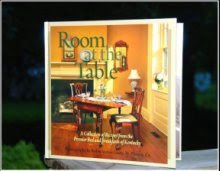 Tea is so popular right now, even the men are drinking it. Prior to the 20th century, the drinking of tea was associated with "ladies" attending afternoon tea parties or meeting each other in tea rooms for a slice of cake and a little pleasant conversation. But it seems it is more popular now than ever and has become more or less a household staple, drunk throughout the day by some and in stead of coffee by others. So has the Victorian afternoon tea died out completely? Not according to some. I have a Victorian bed and breakfast. Although we have very modern amenities, we have retained Victorian decor and the feeling of the 1800s, when my house was built. Visitors love it. It makes them feel as though they have been taken back in time . So what has this got do with Victorian teas?
Tea is so popular right now, even the men are drinking it. Prior to the 20th century, the drinking of tea was associated with "ladies" attending afternoon tea parties or meeting each other in tea rooms for a slice of cake and a little pleasant conversation. But it seems it is more popular now than ever and has become more or less a household staple, drunk throughout the day by some and in stead of coffee by others. So has the Victorian afternoon tea died out completely? Not according to some. I have a Victorian bed and breakfast. Although we have very modern amenities, we have retained Victorian decor and the feeling of the 1800s, when my house was built. Visitors love it. It makes them feel as though they have been taken back in time . So what has this got do with Victorian teas?Well, it seems as though being taken back in time is not enough, some visitors want a hands on, more authentic experience. What was the food actually like? What did the dishes, and the cups and the tea service actually look like. What did it feel like to participate is such a ritualistic, elegant event? How fun would it be to have that experience? And so, after getting numerous calls asking if we do Victorian teas, we've decided to give the people what they're asking for. First thing we did was dig into the history a bit.
 According to legend, tea drinking started accidentally in 2737 BC, when Chinese emperor Shen Nong was served water into which dried tea leaves had fallen. He thought it had an "interesting" flavor and eventually drinking tea spread though out his empire. It later became so well liked that it was cultivated and served during ritual tea ceremonies both in China and Japan. The art of the tea ceremony became so popular that tea houses sprang up all though out the orient.
According to legend, tea drinking started accidentally in 2737 BC, when Chinese emperor Shen Nong was served water into which dried tea leaves had fallen. He thought it had an "interesting" flavor and eventually drinking tea spread though out his empire. It later became so well liked that it was cultivated and served during ritual tea ceremonies both in China and Japan. The art of the tea ceremony became so popular that tea houses sprang up all though out the orient.By the late 1600s, tea drinking had made its way to Europe. And, by the 1700s, France and Holland led Europe in using tea, with England running a close third. And it was here, in England, that the European tea service format was created by Anna, the dutchess of Bedford. She would frequently invite her friends to an afternoon of conversation, serving small cakes, sandwiches, assorted sweets and, of course, tea.
Two types of tea services emerged, high tea and low tea. Low tea was served in the homes of the wealthy and consisted of gourmet tidbits, rather than a regular meal, with the emphasis on presentation and conversation. High tea was the main afternoon meal of the middle and lower classes and featured meats and vegetables, as well as sweets and tea.
So, we, at the Aleksander House, are planning on presenting Victorian Teas, in all their splender, to maybe 10-12 persons from 2-4 pm, by appointment. We will be doing this on a customized basis and are already emersed in the planning of one such event for the first week in April. In later posts, I'll let you know about the service, the food, and so on. Keep posted!
If you enjoyed this post, please consider making a comment



















 Nancy Hinchliff
Nancy Hinchliff





